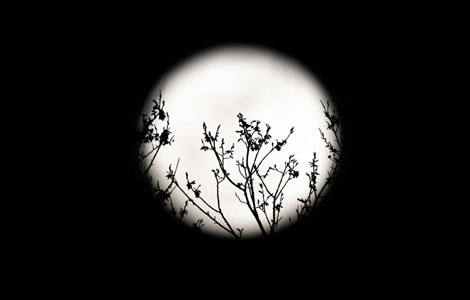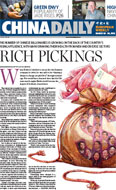Art
The elegant brush: a look at Chinese painting
Updated: 2011-03-16 17:41
(Fortune Cookie News)
Starting around 4000 B.C. traditional Chinese painting has developed continuously over a period of more than six thousand years. Building on the tradition of calligraphy, Chinese painting developed a distinctive style that differs greatly from Western painting.
|
 |
The single most astonishing fact about Chinese Brush Painting is that each brush stroke is a defining move that produces a portion of the painting that is neither improved upon nor corrected. From first to last stroke, the artist must 'get it right' while in Western watercolor corrections and overpainting are a part of the technique.
Besides, No sketch is prepared and no model is used; the artist paints with rapid, mentally constructed strokes transporting a 'mind image' to mulberry paper. Rather than looking at the subject as you paint, you bringing it forth from your mind and heart and becoming part of nature. Poets are usually written to describe the paintings or to express the artists’ feelings.
 |
Chinese Brush Painting is meant to be more than a representation of an object; it is also a symbolic expression. This is why a full plant is never painted, but rather a few blossoms which will represent the plant in it's entirety, and, in fact, all of life - a TAO principle.
According to subject matter, Chinese paintings can be classified as landscapes, figure paintings and flower-and-bird paintings; Chinese landscape painting embodies a major category. The artist seeks to express both inner harmony and harmony with the natural surroundings. Chinese poets and painters often have sought inspiration by withdrawing to isolated, mountainous areas, and these landscapes have become conventional themes of Chinese art.
When it comes to technique, there are two major categories of Chinese painting: meticulous (or the ‘gongbi’ school), characterized by fine brush work and close attention to detail and freehand (or the ‘xieyi’ school) characterized by freehand brush work and exaggerated forms.
Source: Fortune Cookie News
E-paper

City of Joy
Welcome to the 'world of smiles' where life meanders slowly.
Debate on nuclear power revived
The future is now
Common approach
Specials

Beloved polar bear died
Berlin's beloved polar bear Knut, an international star died Saturday.

Panic buying of salt
Worried Chinese shoppers stripped stores of salt on radiation fears.

'Super moon'
The "Super Moon" arrives at its closest point to the Earth in 2011.
